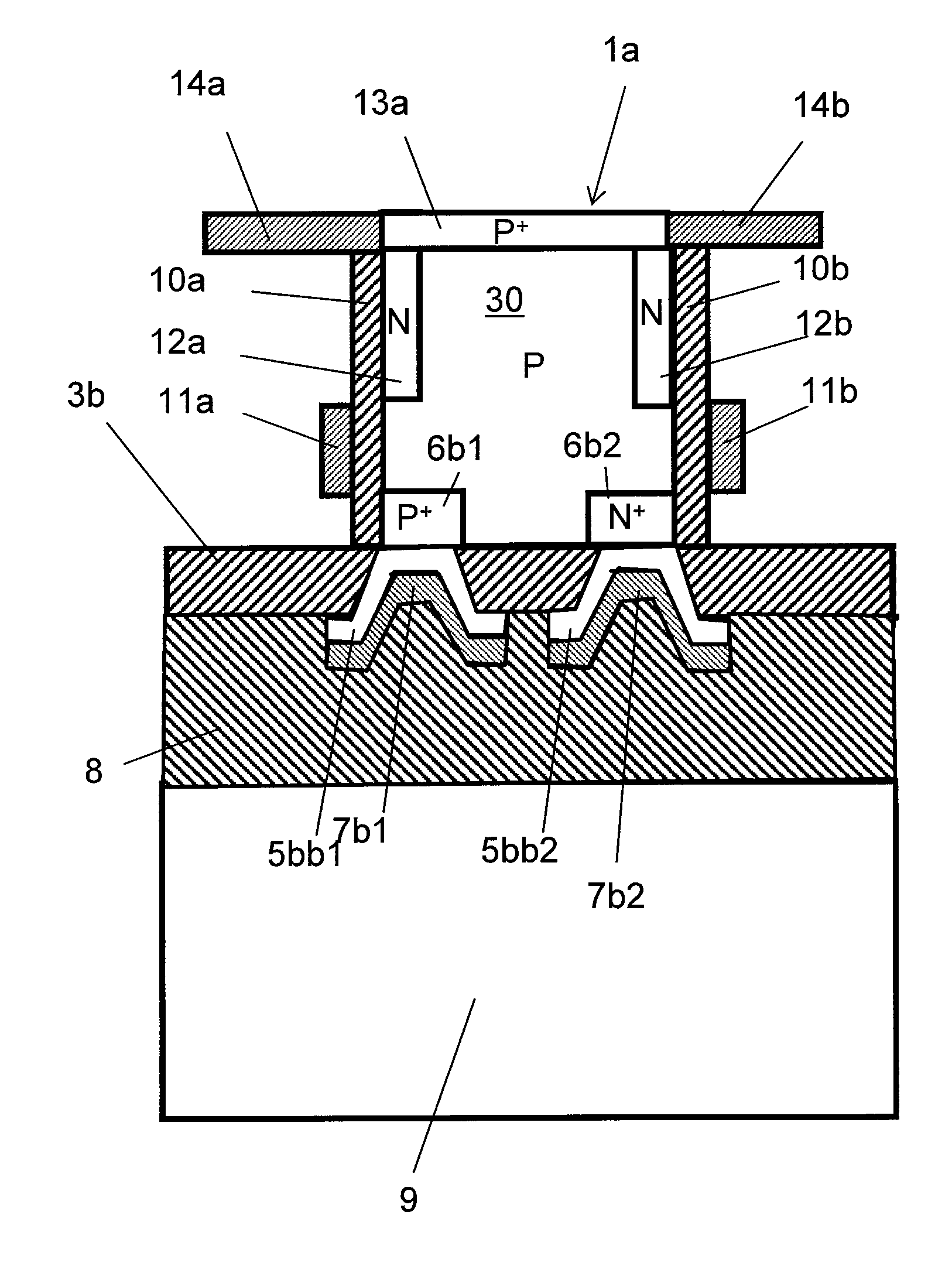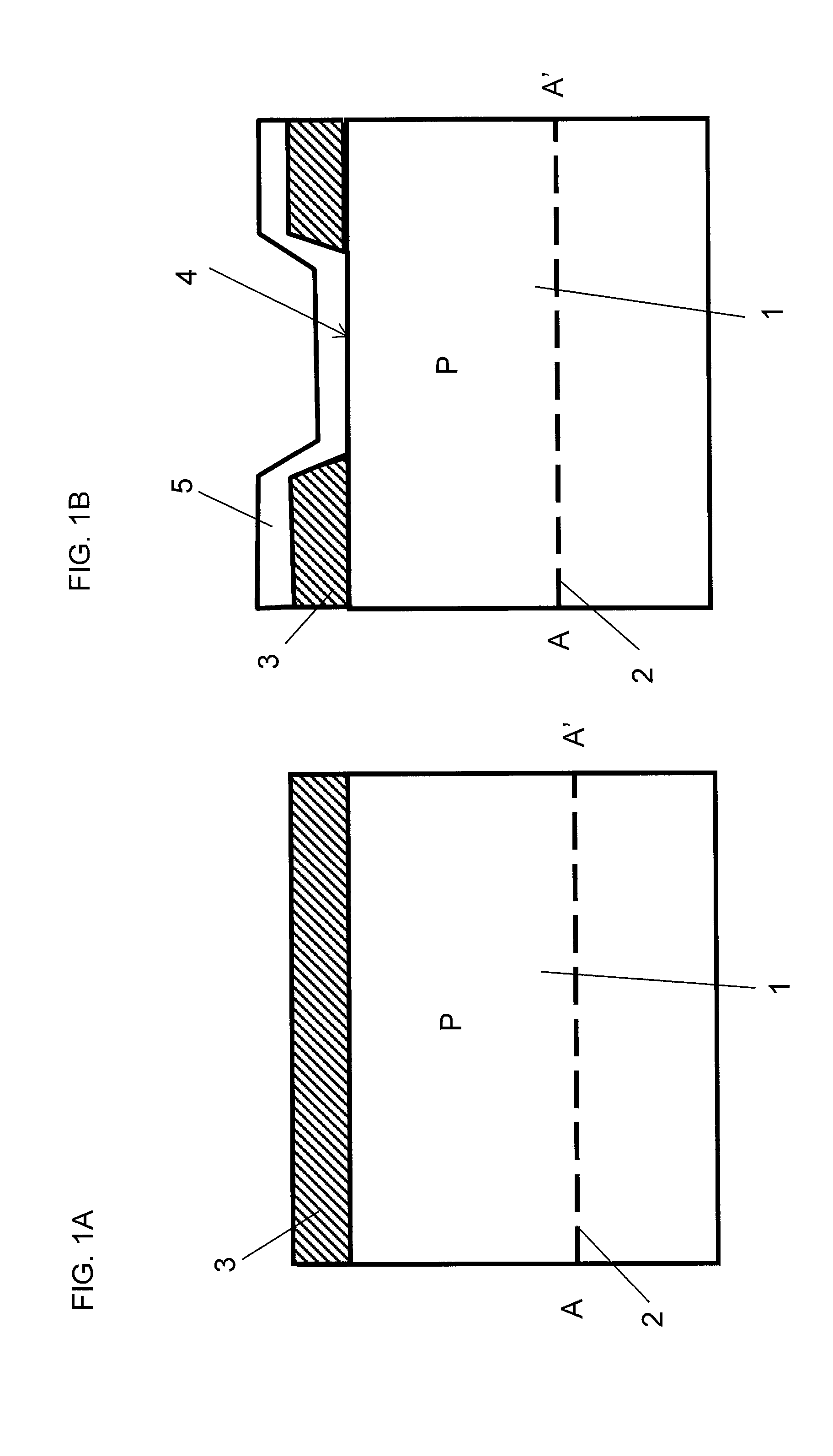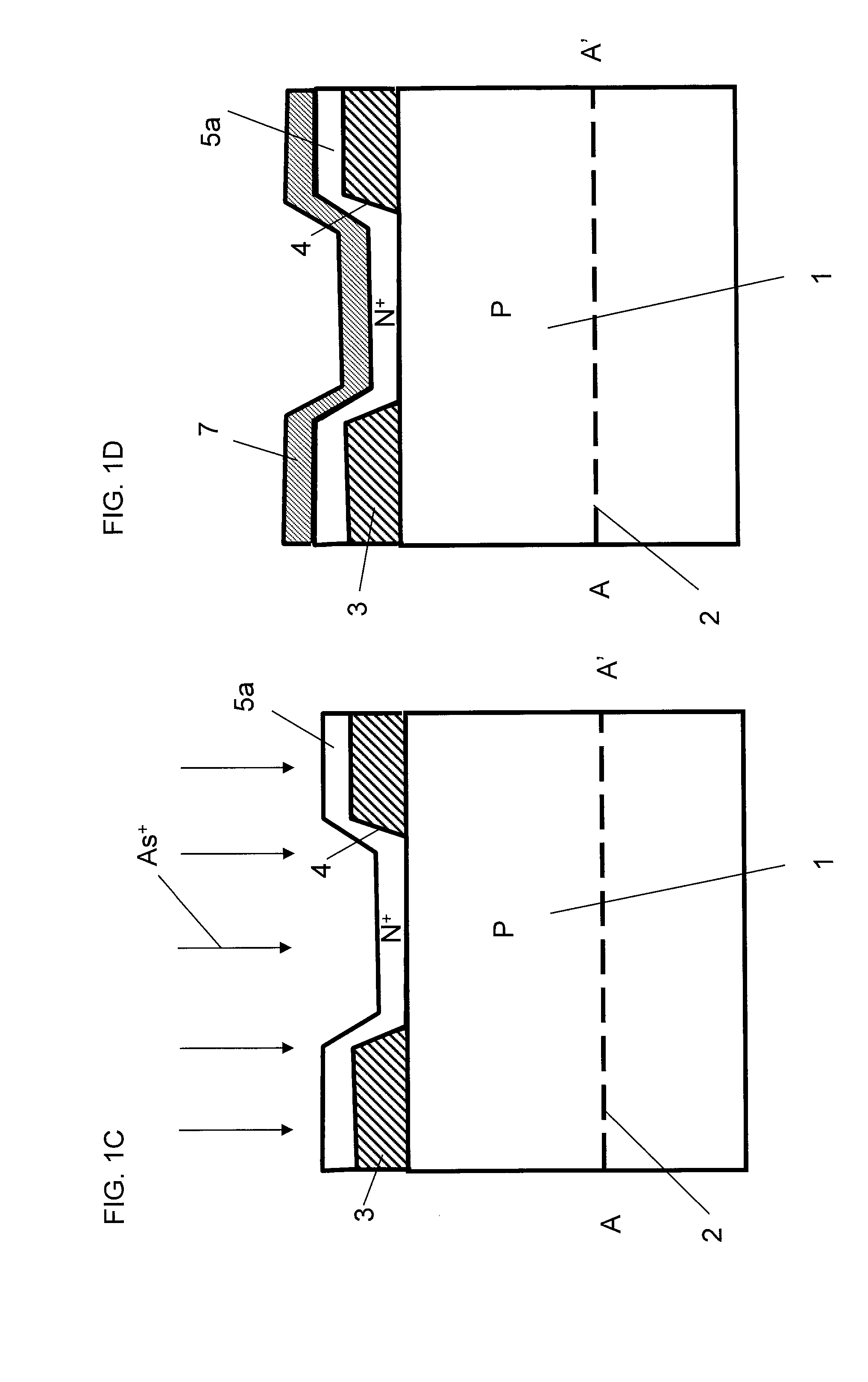Method for producing semiconductor device and semiconductor device
a technology of semiconductor devices and semiconductor devices, applied in semiconductor devices, diodes, electrical devices, etc., can solve problems such as the difference in high-speed operation properties, and achieve the effect of high degree of integration and high-speed operation
- Summary
- Abstract
- Description
- Claims
- Application Information
AI Technical Summary
Benefits of technology
Problems solved by technology
Method used
Image
Examples
first embodiment
[0157]FIGS. 1A to 1L illustrate a method for producing a solid-state imaging device according to a first embodiment of the present invention.
[0158]In the method for producing a solid-state imaging device according to this embodiment, as illustrated in FIG. 1A, a division layer 2 for dividing a first semiconductor substrate 1 into two portions of an upper portion and a lower portion is formed by doping the first semiconductor substrate 1 composed of P-type silicon with protons (H+) at a high concentration to a predetermined depth of the first semiconductor substrate 1 (refer to M. Bruel: “Silicon on Insulator material technology”, Electronics Letters Vol. 31, No. 14, pp. 1201-1202 (6 Jul., 1995)). A first silicon oxide layer 3, which is an insulating film, is formed on the first semiconductor substrate 1 by thermal oxidation or a CVD (chemical vapor deposition) process. Instead of the P-type silicon, the first semiconductor substrate 1 may be composed of an intrinsic semiconductor (i...
second embodiment
[0190]Hereinafter, a method for producing a semiconductor device including an SGT (surrounding gate transistor) according to a second embodiment of the present invention will be described with reference toFIG. 2.
[0191]In this embodiment, in the steps illustrated in FIGS. 1A to 1J out of the steps of the first embodiment illustrated in FIGS. 1A to 1L, the N+ polycrystalline silicon layer 5a constituting the signal line in FIG. 1J is replaced by an N+ polycrystalline silicon layer 55a that functions as a drain in an SGT. As in the first embodiment (refer to FIG. 1J), the metal layer 7 is bonded to the N+ polycrystalline silicon layer 55a; the N+ diffusion layer 6a is formed in the silicon pillar 1a by thermal diffusion of a donor impurity from the N+ polycrystalline silicon layer 55a.
[0192]In the embodiment, the step in FIG. 1J is followed by a step illustrated in FIG. 2. In this step, gate insulating layers 15a and 15b are formed in outer peripheral portions of the silicon pillar 1a...
third embodiment
[0197]Hereinafter, a method for producing a semiconductor device including SGTs according to a third embodiment of the present invention will be described with reference to FIGS. 3A and 3B. In this embodiment, an N-channel SGT and a P-channel SGT are formed on the same semiconductor substrate. The steps for producing the semiconductor device in the embodiment and a modification of the embodiment are the same as in the first embodiment unless otherwise specified below.
[0198]In the embodiment, referring to FIGS. 3A and 3B, an N-channel SGT is formed in an N-channel-SGT-forming region 1n and a P-channel SGT is formed in a P-channel-SGT-forming region 1p on the first semiconductor substrate 1.
[0199]The N-channel SGT in the N-channel-SGT-forming region 1n is formed in the same manner as the steps illustrated in FIGS. 1A to 1J of the first embodiment and the step illustrated in FIG. 2 of the second embodiment.
[0200]The P-channel SGT in the P-channel-SGT-forming region 1p is basically form...
PUM
 Login to View More
Login to View More Abstract
Description
Claims
Application Information
 Login to View More
Login to View More - R&D
- Intellectual Property
- Life Sciences
- Materials
- Tech Scout
- Unparalleled Data Quality
- Higher Quality Content
- 60% Fewer Hallucinations
Browse by: Latest US Patents, China's latest patents, Technical Efficacy Thesaurus, Application Domain, Technology Topic, Popular Technical Reports.
© 2025 PatSnap. All rights reserved.Legal|Privacy policy|Modern Slavery Act Transparency Statement|Sitemap|About US| Contact US: help@patsnap.com



